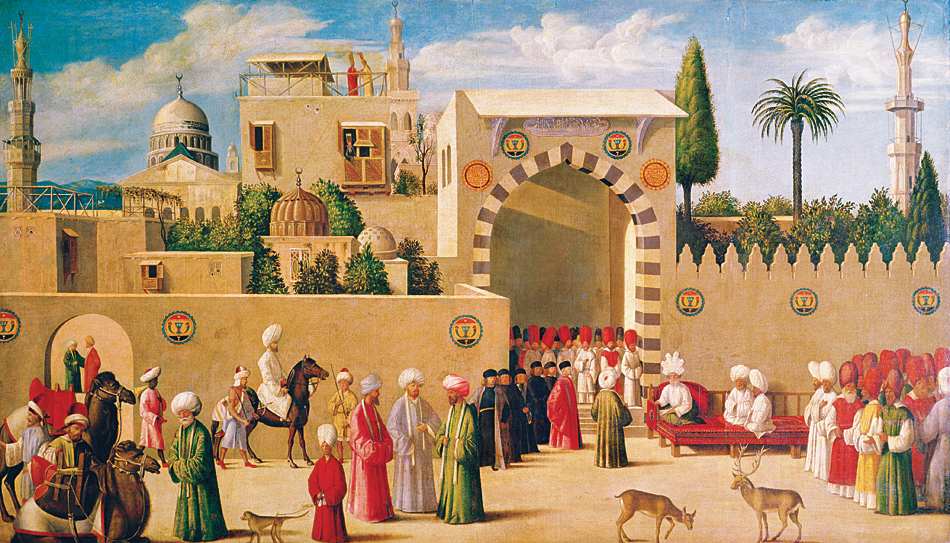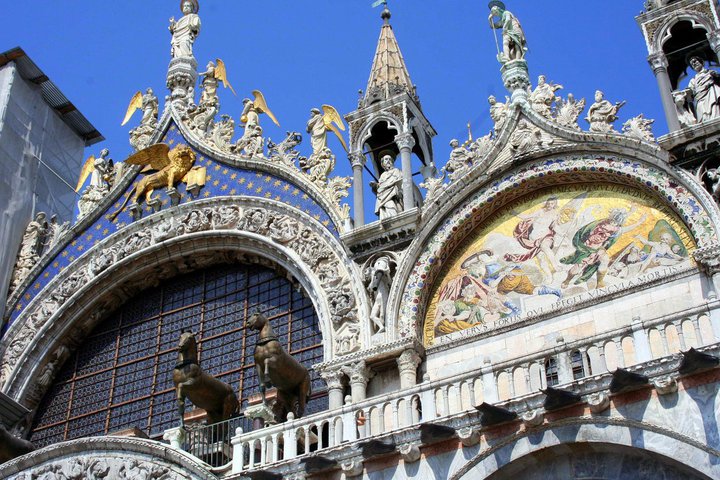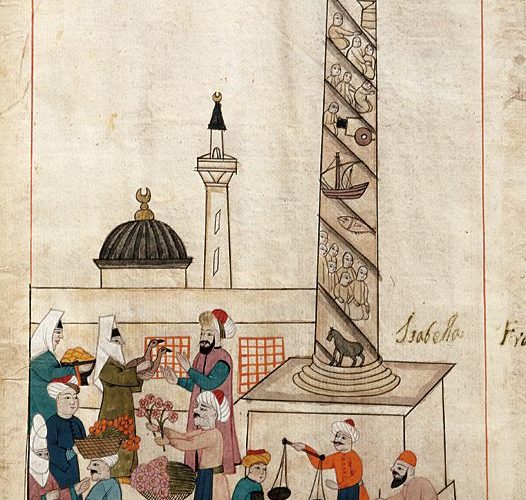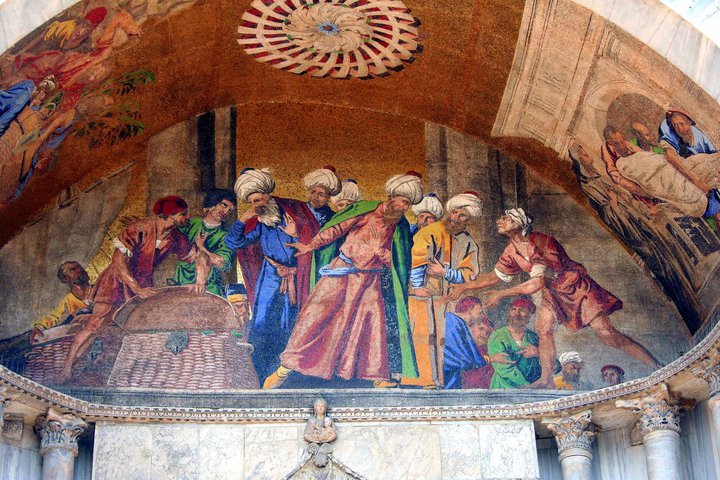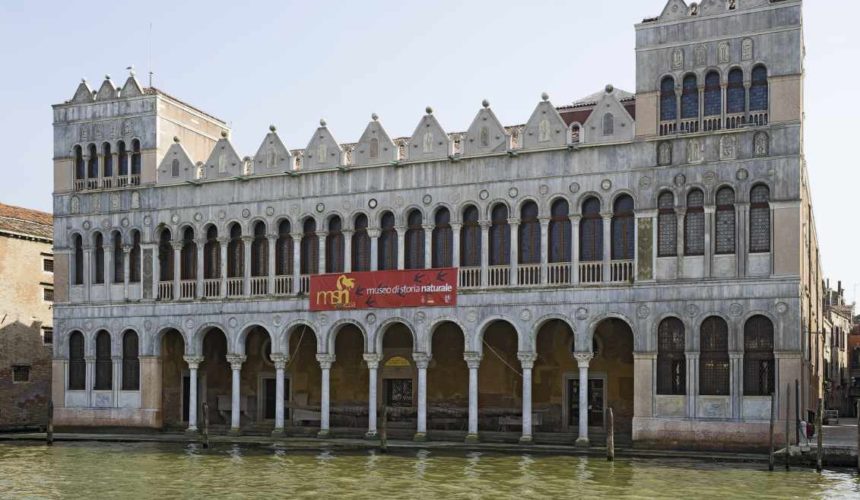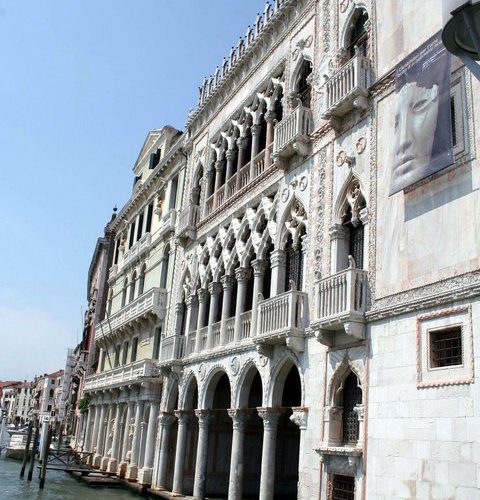A fascinating article about Venice a few hundred years ago when it flourished as the hub of Europe’s trade with the lands to its east and south. It shows how Venice was a meeting point for commerce and culture, especially with the Muslim World.
“Abroad, Venetian diplomats and merchants traveled throughout the Islamic world, from the Nile Delta to to Constantinople to Azerbaijan,” notes Denny, “and their relazioni or reports tothe Venetian authorities still serve as important documentation of Islamic politics, history, economics and art.”
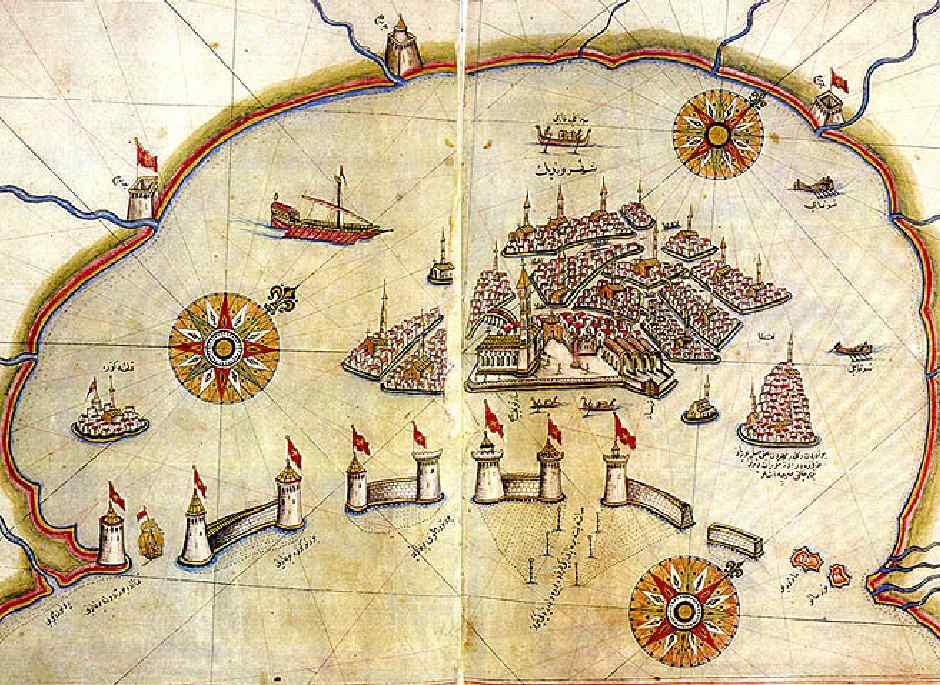
Venice trading with the Muslim world
Inside the Muslim cities of Alexandria, Constantinople (later renamed Istanbul), Damascus, Acre, Aleppo, Trebizond and Tabriz, the Republic created mini-Venices, commercial enclaves overseen by a bailo, or consul, complete with churches, priests, merchants, doctors, barbers, bakers, cooks, tailors, apothecaries and silversmiths.
“Abroad, Venetian diplomats and merchants traveled throughout the Islamic world, from the Nile Delta to Syria to Constantinople to Azerbaijan,” notes Denny, ” and their relazionior reports to the Venetian authorities still serve as important documentation of Islamic politics, history, economics and art.”
Without Muslim trade, Venice would simply not have existed. Instead of the powerful maritime republic, “La Serenissima,” that dominated Mediterranean commerce from the 12th to the 16th century, the lagoon settlement would likely have remained a fishing village.
But of course, there was trade—arguably the greatest the world had known. Silk, spices, carpets, ceramics, pearls, crystal ewers and precious metals arrived in Venice from the East, while salt, wood, linen, wool, velvet, Baltic amber, Italian coral, fine cloth and slaves went to Egypt, Anatolia, the Levant and Persia.
Who could count the many shops so well furnished that they also seem warehouses,” marveled the Milanese priest Pietro Casola on a 1494 visit to Venice’s Rialto, “with so many cloths of every make—tapestry, brocades and hangings of every design, carpets of every sort, camlets of every color and texture, silks of every kind; and so many warehouses full of aromatics, spices and drugs, and so much beautiful white wax!” (Presumably, the priest was happy to locate wax suitable for votive candles.)
It was a somewhat one-sided business since trade with Venice was a relatively minor aspect of the Mamluk and Ottoman economies. Nonetheless, the Republic was important enough to be the only Christian city to appear on Ibn Khaldun’s 14th-century world map. Yet for Venice, on the other hand, Muslim trade represented fully half the Republic’s revenues…
More Images

Venetians, Turks and others would have met in markets like this one in the Jerrahpasha district of Constantinople (Istanbul), across the Golden Horn from the Venetians’ trading centers. The spiral column shown in this illustration from a 16th-century Ottoman manuscript was erected in about 405 by the Eastern Roman emperor Arcadius. (Source)

A palace built on the Grand Canal in Venice in the mid-13th century was allocated to the city’s Turkish merchants in 1621 as warehouse and living accommodation, and was thereafter known as the Fondaco dei Turchi. Today it is Venice’s natural history museum. (Source)

Muslim Figures on Facade of St Mark’s Basilica, Venice, Italy
(Image © Cem Nizamoglu)

The Fondaco dei Turchi (The Turks’ Inn) entrance from the Grand Canal
(Image © Cem Nizamoglu)

Some of the Horses of Saint Mark, these are the replica of the Triumphal Quadriga, originals have been brought from Constantinople (Istanbul) back in 1204, which are now residing in the interior of St. Mark (Image © Cem Nizamoglu)
Read More:
www.muslimheritage.com/article/east-meets-west-venice
This article appeared on pages 2-13 of the March/April 2008 print edition of Saudi Aramco World, vol. 59, N° 2. For the online version, see: Richard Covington, East Meets West in Venice (© Saudi Aramco World).


